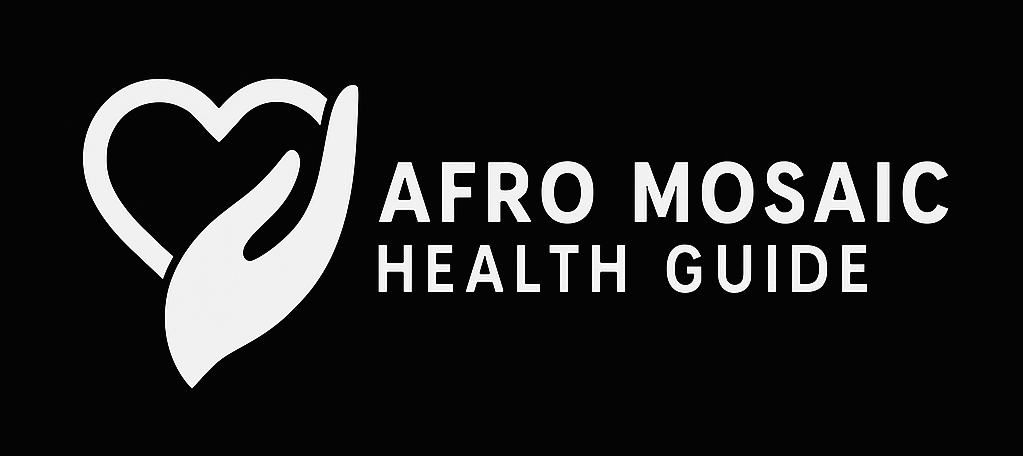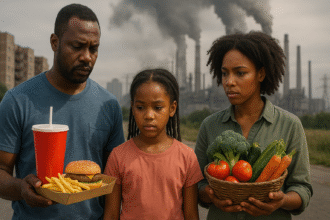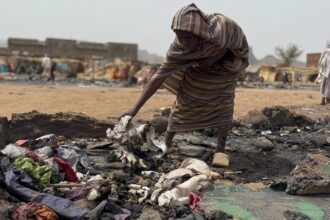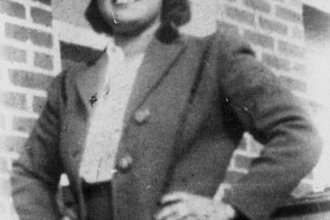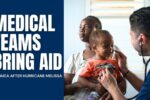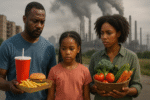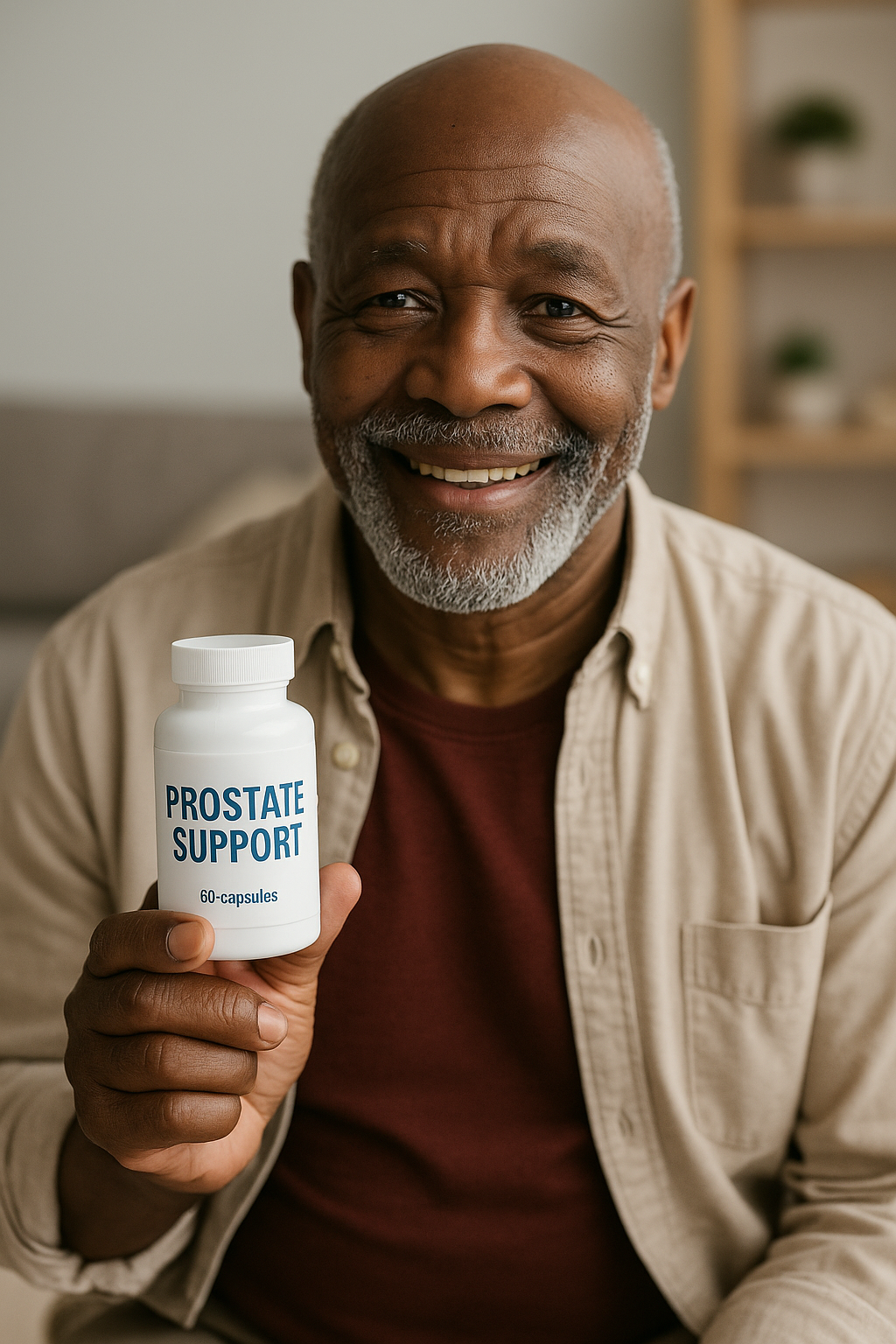By AMHG Magazine Editorial Team
The sky darkens, the wind howls, and the rain begins to drum its rhythm on zinc rooftops. For adults, it’s another storm. But for Jamaica’s children, it’s the sound of everything they know being tested — again.
In the Caribbean, we’ve always lived with weather that demands respect. But today, the storms are stronger, the floods are deeper, and the price our children pay is far too high.
This is not just a story of climate and science. It’s a story of people — of roots, resilience, and a generation growing up in the shadow of rising seas.
When Home Becomes the Frontline
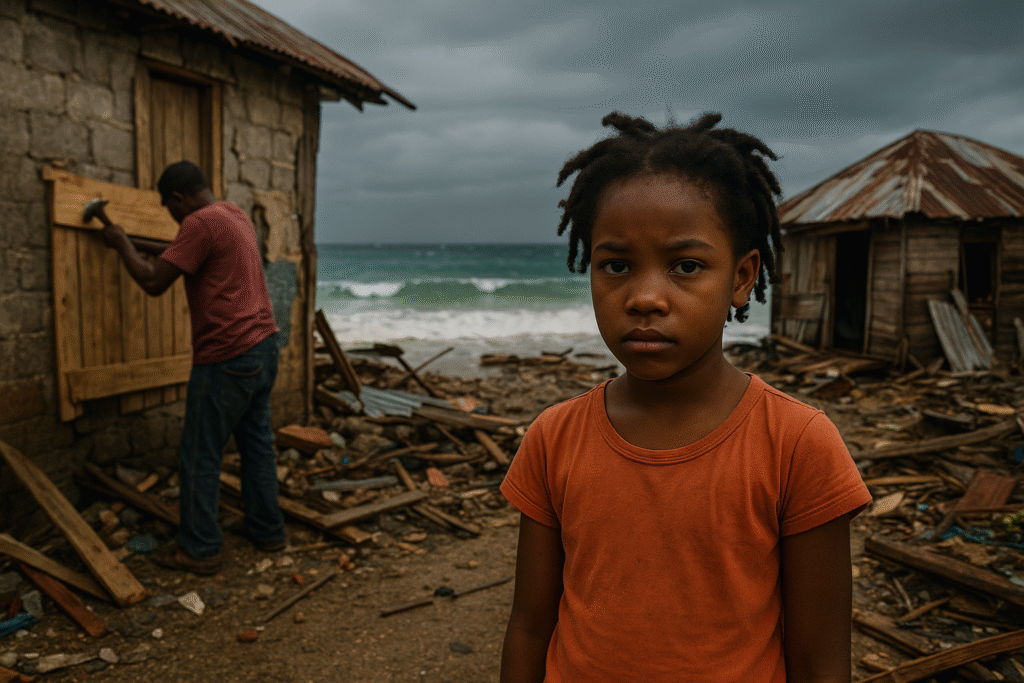
Across this small yet mighty island, nearly 70 percent of children live in coastal or hazard-prone areas. They wake to the same ocean that once meant joy — the blue stretch where fathers fish and cousins play — but now, that same sea brings fear. Each hurricane season, it rises like a reminder: paradise is fragile.
For the adults, recovery means hammering new boards and patching old roofs. But for the children, it means lost classrooms, missing friends, and dreams put on hold.
“After Hurricane Beryl, I couldn’t go to school for weeks,” says 11-year-old Shanique from St. Thomas. “The water took our books and uniforms. My mom said we’d start over, but it’s hard when everything’s gone.”
Her story is one of thousands — small voices speaking truth to power. Each storm tears away more than structures; it chips at confidence, childhood, and continuity.
When Systems Fail, Hope Feels Distant
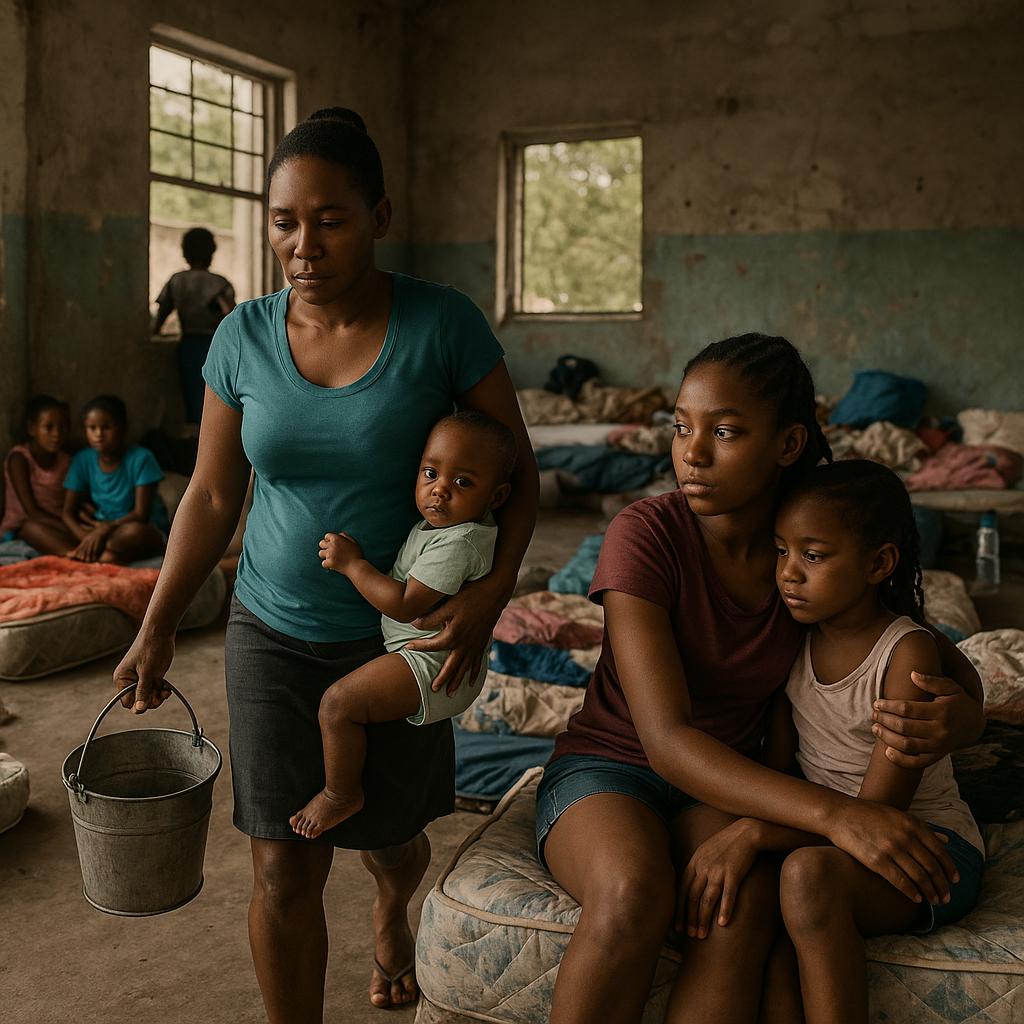
UNICEF reminds us that after every disaster, Jamaica’s essential lifelines — health care, education, and sanitation — are often the first to crumble. Hospitals lose power. Schools turn into shelters. Clean water becomes a privilege.
In these moments, the smallest citizens face the biggest burdens. Waterborne diseases spread. Families skip meals. Children share tiny spaces with dozens of others, their laughter dimmed by exhaustion.
In rural parishes, mothers walk miles to find clean water, carrying babies and buckets in the same embrace. In shelters, teenagers cradle younger siblings while their parents search for food or work. Through it all, there’s faith — quiet, steady, Caribbean faith — that somehow, they will rise again.
But trauma leaves its mark. Every thunderclap reminds a child of the night their roof lifted. Every gust of wind brings back the sound of fear.
Inequality Beneath the Rain

The truth is, climate change doesn’t strike evenly. It finds the cracks that poverty leaves behind.
In communities already struggling for access to safe water, sanitation, and stable housing, floods hit harder and last longer. Contaminated water spreads faster in informal settlements. Families without proper drainage face greater risk of illness.
Here, the injustice is clear: those who have contributed least to global warming bear its heaviest weight. And within that imbalance, children stand most vulnerable — robbed of stability, robbed of opportunity, yet still holding onto hope.
Clean water. A dry bed. A place to learn. These should never be luxuries. Yet for too many Jamaican children, they are blessings that come and go with the weather.
The Rising Sea and the Sinking Heart
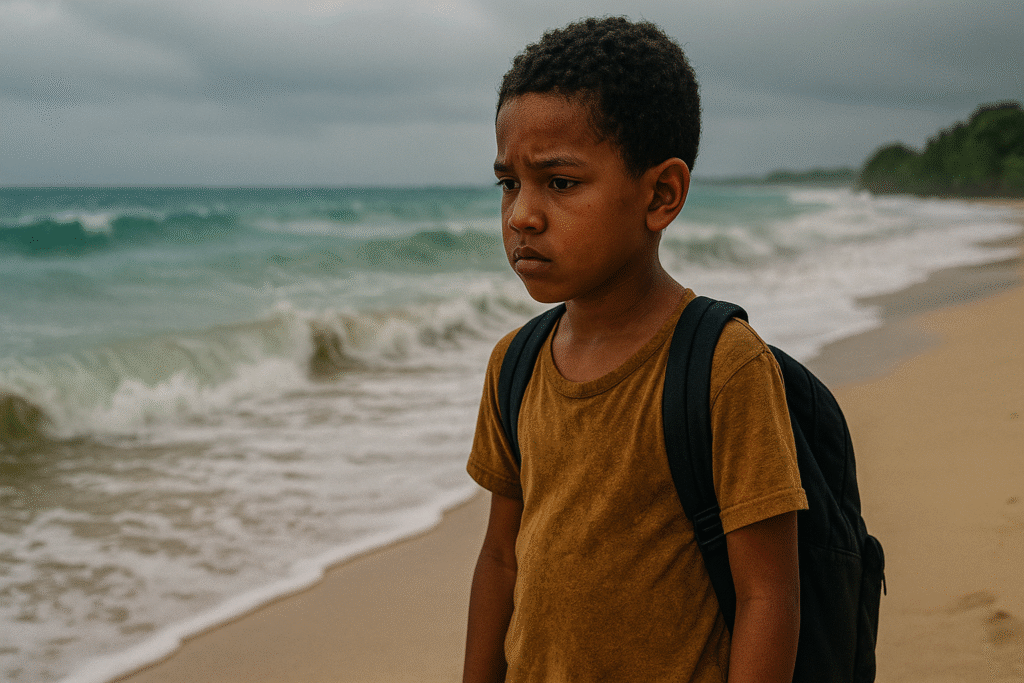
In coastal parishes like Portland, Clarendon, and Westmoreland, the ocean is creeping closer each year. Saltwater poisons farmland and seeps into wells. Families who once depended on the sea now fear it.
The same beaches where children built castles now swallow up the shore.
For the Caribbean, this isn’t just about climate — it’s about culture, history, and identity. The sea is part of who we are. But it’s changing before our eyes. The tide is rewriting the stories of our islands, erasing the places that raised us.
Resilience, Justice, and the Spirit of “Wi likkle but wi tallawah”
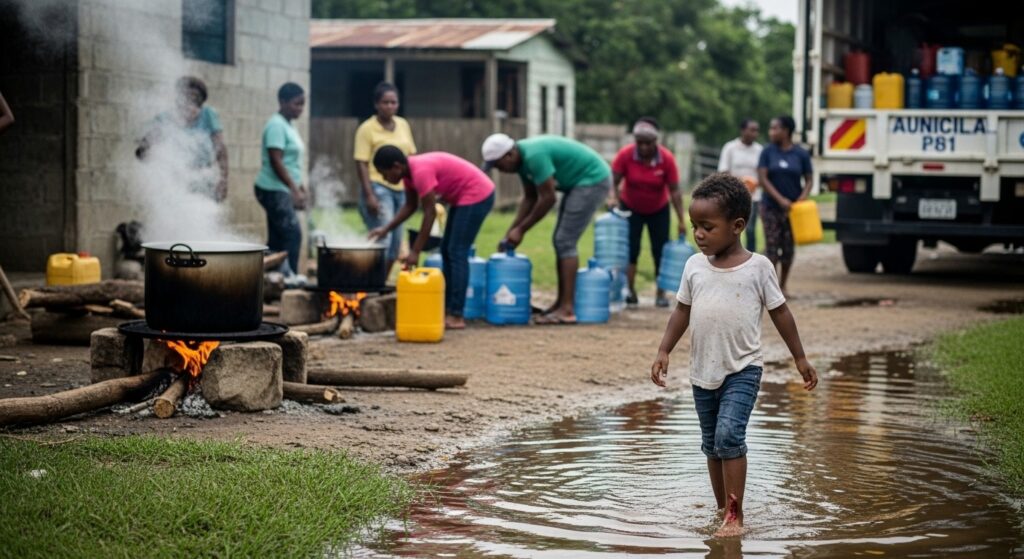
Still, Jamaica stands. We bend but never break.
In schools and churches, in community centres and kitchens, people are finding new ways to fight back — planting mangroves, rebuilding homes stronger, teaching children how to prepare and protect themselves.
UNICEF Jamaica and local groups are helping communities build resilience early — turning knowledge into power, and power into safety. But what we truly need is climate justice — global accountability and local action that puts our children first.
Because our children didn’t warm the oceans or fuel the storms. Yet they inherit their consequences.
They deserve more than survival — they deserve the promise of peace, health, and home.
The Sunshine After the Rain
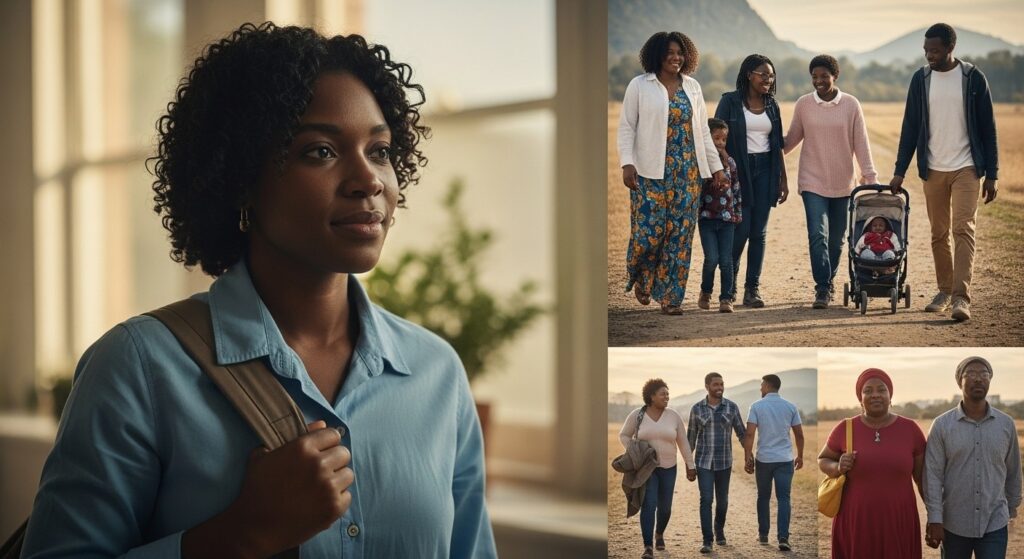
And still, the sun rises. Every time the skies clear, something sacred happens across this island: rebuilding.
Neighbors share tools and food. Teachers open schools with borrowed supplies. Children play barefoot in the mud, laughing as if joy itself were defiance.
This is the heartbeat of Jamaica — love louder than loss, courage stronger than wind.
But we cannot keep rebuilding the same way and expect a different future. Without bold investment in climate adaptation, infrastructure, and child-centered planning, the next storm will steal more than homes — it will steal hope.
AMHG Reflection
Our children are not just victims of climate change — they are vision-bearers for a better tomorrow. Their resilience tells a story older than the hurricanes and stronger than the waves.
As a community, as a diaspora, as a people — we must protect them, empower them, and rise with them.
Because in every Jamaican child, there’s a spark that refuses to die.
And if we nurture that light, it just might be bright enough to guide the whole world through the storm.

